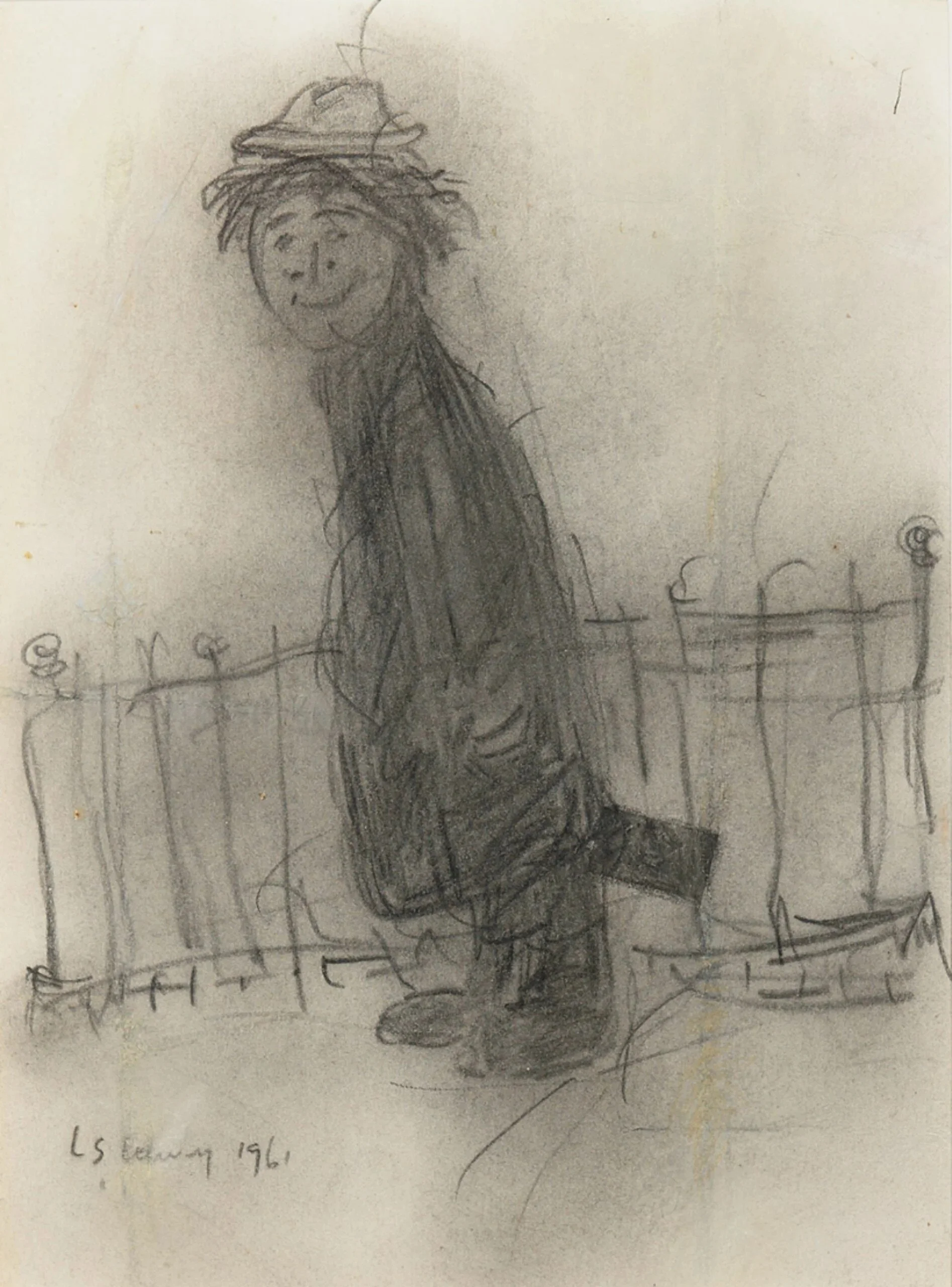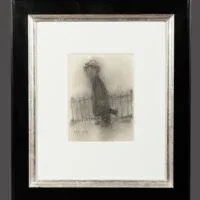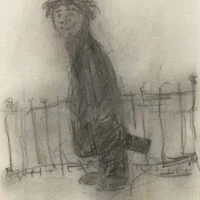The Grinning Tramp, 1961 by L S Lowry - NO LONGER AVAILABLE



The Grinning Tramp, 1961 by L S Lowry - NO LONGER AVAILABLE
Lowry was passionate about capturing the on goings of the local people, taking his sketchbook everywhere with him and drawing his surroundings as he went along. He would even draw onto any random scrap of paper he could find such as receipts. The spontaneity of these drawings captured the energy of their location and that particular moment in time.
DIMENSIONS: (unframed) 8.5 x 6.5 ins/ 21.6 x 16.5 cm
SIGNATURE: Signed ‘L. S. Lowry’ and dated (lower left)
MEDIUM: Pencil on paper
Price: £POA. - NO LONGER AVAILABLE
Description
The Grinning Tramp is characteristic of L. S. Lowry’s later depictions of the down and outs of British society where he captures the on goings of the local people, taking his sketchbook everywhere with him and drawing his surroundings as he went along. Lowry would often portray these figures in a simplistic and somewhat humorous manner. He insisted his work was based on real characters, often people he saw living on the streets. Also, the spontaneity of these drawings captured the energy of their location and that particular moment in time.
Here, Lowry contrasts the heavily filled and outlined figure with the almost non-existent background drawing the viewer to concentrate on the facial expression of the individual character. The subject’s cheerful expression has been achieved with just a few decisive lines of the pencil and some gentle smudging in the places which is all Lowry requires to achieve this insightful snapshot into the world the artist saw.
Provenance
Private collection, United Kingdom
Biography
Laurence Stephen Lowry was an English artist born on Barrett Street, Stretford, in Lancashire. Many of his drawings and paintings depict nearby Salford and the surrounding areas, including Pendlebury, which is where he lived and worked for over 40 years.
As a young boy, Lowry lived in the leafy Manchester suburb of Victoria Park. Lack of finances resulted in the family then having to move to Station Road, Pendlebury, Salford – a far more industrial landscape than Lowry had been used to. Lowry would recall “At first I detested it, and then, after years I got pretty interested in it, then obsessed by it.”
Lowry studied both at the Manchester Academy of Fine Art and at Salford Royal Technical College in Peel Park, close to where he lived. Tutored by the likes of the famed French impressionist Adolphe Valette, and inspired by the Pre-Raphaelite artists Ford Madox Brown and Rossetti, Lowry understood how the power of art and artists could influence the representation of landscapes and, in particular, the modern city. Lowry felt that drawings were as hard to do as painting. He worked the surface of his drawings by smudging, erasing and rubbing the pencil lines on his paper to build the atmosphere of the drawing. Lowry developed his own individual style, gathering inspiration from the surrounding landscape of busy cotton mills, terraced houses and the bustle of the working classes.
Best known for his depictions of industrial Manchester and Salford and “matchstick men,” his work covers a wide range of subject matter including seascapes, landscapes and portraits, among which are the oil paintings of his mother and father which he kept on display in his home throughout his life.
L.S Lowry has been one of the biggest British successes in the last ten years moving out of obscurity to a key position in British Art. His work can now be found in museums and private collections across the globe, including the Fitzwilliam Museum in Cambridge, The Imperial War Museum in London, the MOMA in New York and the Tate in London. In 2013, Tate Britain held a retrospective of his work, the first one since his death.